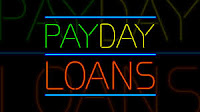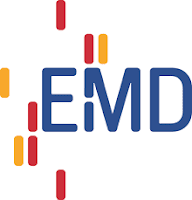Introduction
On-Page Optimization refers to all the steps that can be taken inside a website to
 improve its ranking in search results. The On-Page optimization helps to improve the visibility of a page or a website by giving it a high ranking index. It also helps to improve the quality of a page and also helps to optimize its contents. There are different steps to achieve a good On-Page optimization.
improve its ranking in search results. The On-Page optimization helps to improve the visibility of a page or a website by giving it a high ranking index. It also helps to improve the quality of a page and also helps to optimize its contents. There are different steps to achieve a good On-Page optimization.On-Page Optimization Methods
The different methods that can be used to optimize a page are:
- Google Analytics Installation
- Website Structure Optimization
- Meta Tag Optimization
- Image Optimization
- Site Map Creations
- Robot.txt Optimization
- Website Analysis
Title Tag Optimization :
Title Tags define the title of a document. The Title Tags are important for both users and search engines. The Title Tag should accurately describe a page's content. Google can typically display characters up to 512 pixels in the Title Tag that is 55-60 characters. If the Title Tag contains about 55 characters it will be optimal. But sometimes the search engine may display a different title than what we have provided to match our products or user query or other factors.
Google Analytics Installation :
Google Analytics help us to manage customer interactions of your website. Using Google Analytics we can see who visited our page, the time spend by the users on our page, the location from where the users visited, the page which they mostly viewed etc.. Using Google Analytics we can understand that which page a user likes or dislikes. Thus we can manage the pages according to the user's review.
Website Structure Optimization :
Website structure plays an important role in optimization. A website should be built in such a way that it should be relevant and the contents inside it should be well organized. The structure should be user friendly and reliable. It should be compatible to every screen size. It should be easy to navigate with in the website and it should be easy for the users to find what they need inside a website. In short the Website Structure Optimization refers to arranging the contents intelligently with in the website.
Meta Tag Optimization :
Meta Tag is a part of web page's head section that is used to specify keywords, page description etc.. Meta Tag should contain relevant keywords related to that web page. The bots read from left to right so the words come first have more importance than the words coming later. Use short and simple sentences in the Meta Tag that describes about the content of your web page. For Google, adding the description meta tag does not result in a boost
in the Search Engine Results Pages (SERPs), but the description might be
used for the description for your SERP listings in Google.
Image Optimization :
In Image Optimization name the images descriptively and in plain English Language. The name should exactly describe the image. Use the alt tags efficiently. The alt tag is also used to describe the image, the alt tag added should appropriate be for the image. The contents around an image should describe the image clearly.
Site Map Creation :
 A site map is a list of pages of a web site accessible to crawlers or users. It can be either a document in Web page of any form used as a planning tool for Web design, or a Web page that lists the pages on a Web site, typically organized in hierarchical fashion. Site map displays the structure of a web site. Visitors can visit this page if they have any problem in locating a particular page on the web site. Search engines can also use this pages to crawl the different pages in your website.
A site map is a list of pages of a web site accessible to crawlers or users. It can be either a document in Web page of any form used as a planning tool for Web design, or a Web page that lists the pages on a Web site, typically organized in hierarchical fashion. Site map displays the structure of a web site. Visitors can visit this page if they have any problem in locating a particular page on the web site. Search engines can also use this pages to crawl the different pages in your website. Robots.txt Optimization :
Robots.txt is a text file web masters create to instruct robots (typically search engine robots) how to crawl and index pages on their website. It is a group of web standards that regulate web robot behavior and search engine indexing. Robots.txt needs to be placed in the top-level directory of a web server in order to be useful. Example: http://www.example.com/robots.txt.
Website Analysis :
Analyze the website using different web analysis tools like Google Web master tools or Google Analytics etc.. Different analysis tools are available today. Analyzing the website helps us to maintain our website quality.
Other Methods :
Making the site mobile friendly will help to improve the SEO ranking. The site should be compatible to any screen size. Offer quality contents and services. This will make a page more popular among users. Use simple language that can be understood by different users. Stay organized around a particular topic and create fresh and unique contents. New ideas and thoughts will attract more users to your site. The effective use of social medias to promote your site will help to increase the visibility of your website.
Conclusion :
The contents described in this article are some of the On-page Optimization techniques that can be used to improve the SEO ranking of a website or a web page. There are also many other techniques that will help you to organize your web page and to improve your site's visibility. Try these techniques and improve your rankings and attract more visitors to your website.










